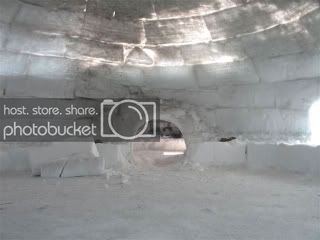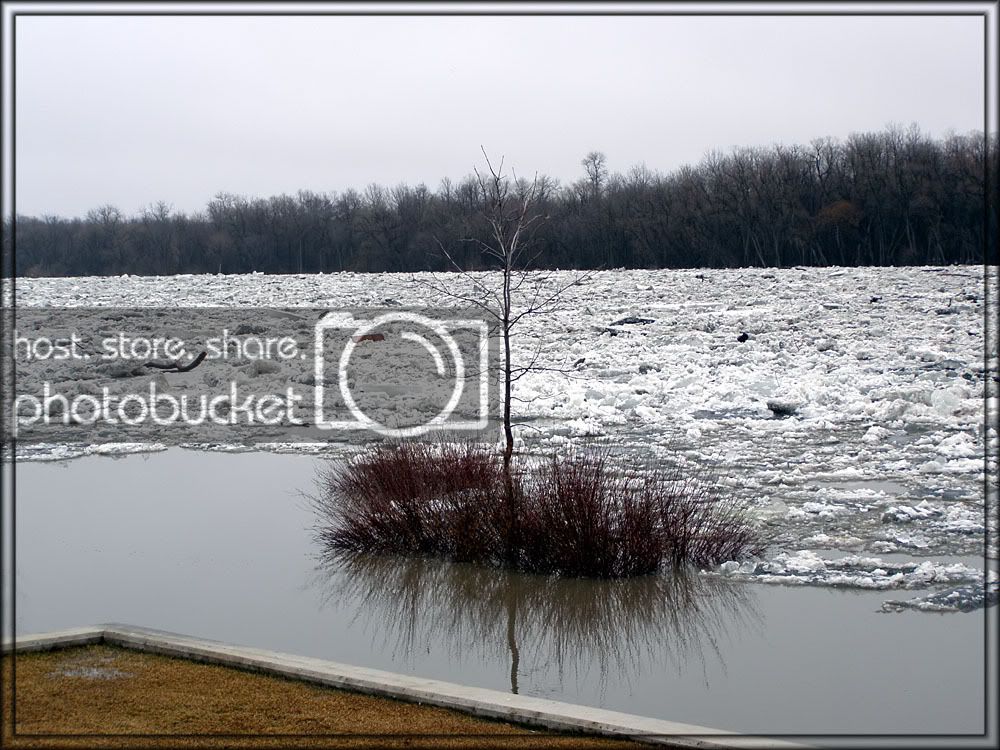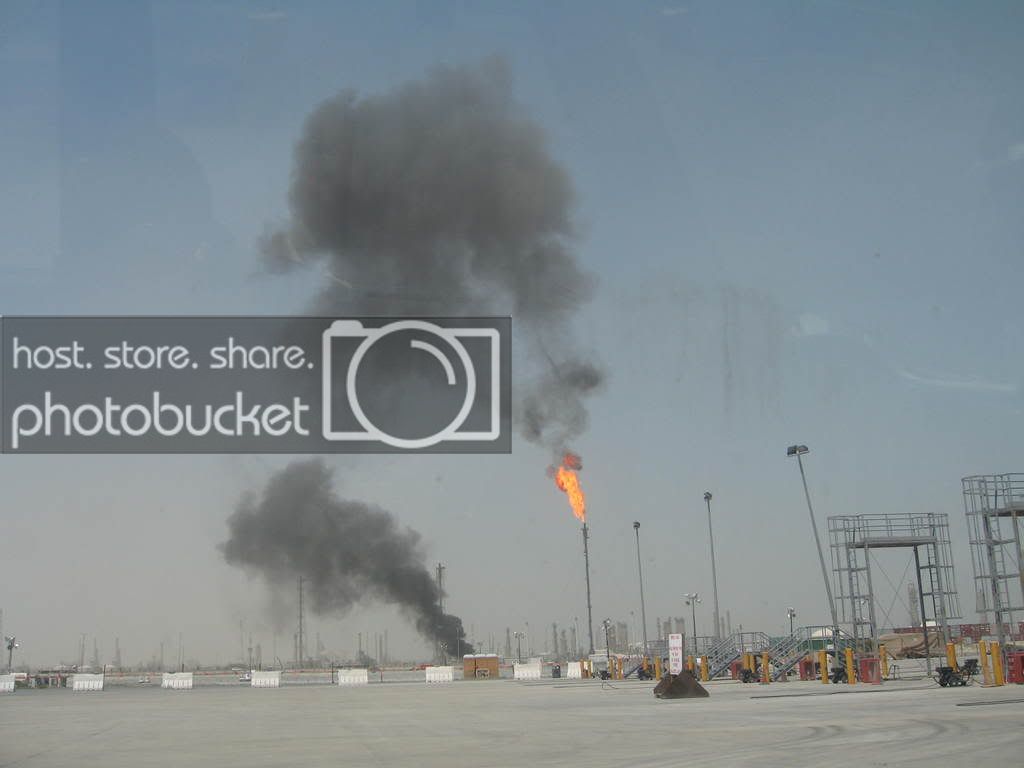( – promoted by navajo)
…but the Arctic is the scene for a new kind of international gold rush…
Arctic a potential conflict zone, Europe warned
BRUSSELS, Belgium – European Union leaders will receive a stark warning next week of potential conflict with Russia over energy resources at the North Pole as global warning melts the ice cap and aggravates international security threats.
People, what people?
The Ice People By Alberto Leoncini
The ambient devastation and the climatic changes have become an actual debate on the polar areas and its destiny; they are also well known as geopolitical and energy areas.
But very little attention is given to the people that live and of course are born in those areas and especially in the Arctic area. The reference is obviously to the Inuit culture, known as “Eskimos” (recent studies state that this word, referring to the Arctic Population that speak the family Eskimo- Aleuta language, means “those who speak a foreign language” and not “raw meat eaters”, as it was known up to a few years ago; as states and theated at p. 27 of the catalogue “inuit and the ice people” mentioned in bibliography), bearers of a stratified culture reinforced in the centuries by the severity and the adversity from the atmosphere and climate conditions.
What are they going to do with the Inuit, treat them as human beings or as “problems” to eradicate?
Will the United States look the other way yet again?
Will the main press who could and should make a difference by at least mentioning their presence in their five second sound bites, give the needed attention to the people living there and their dire situation?
Inuit have settled into 53 communities as far west as Aklavik, NWT within close proximity to north Yukon border; east to Kikiak (Rigolet), Labrador; north to Grise Fiord, on Ellesmere Island in Nunavut, approximately 640 kilometers from the magnetic North Pole; and south to Kuujjuarapik, PQ on the south east shore of Hudson’s Bay. Just under 10% of the Inuit population live outside their respective land claim regions most notably Ontario, Alberta, and British Columbia.
Inuit have a homeland that covers almost a third of Canada. The Inuit AHRDAs serve vast areas where air travel is the only alternative. 50 of the 53 Inuit communities in the 467,107 square kilometers of Inuit settlement land rely heavily on air service for regular supplies and passenger service. Regular air scheduled service can be sporadic due to extreme weather conditions. During the short summer months – July to September heavy equipment, bulk cargo, and building materials are delivered by sea lift or river barge.
Dire situation, what dire situation?
Ice Melting Under The Inuit & Action Call!
(Emphasis mine)
Miller: A ‘new world’ to claim – the Arctic
Governments are even now engaged in asserting sovereignty over these assets. Canada, Denmark and the United States are already involved in disputes over these issues.
For example, Canada and Denmark have sent diplomats and warships to plant flags on Hans Island near Greenland.Manifest Destiny is alive as it aims itself at the Arctic, once again placing human greed above human beings.
Inuit
In the 2001 Census, about 46,000 people living in non-reserve areas reported having Inuit identity. This group represented about 6% of the total non-reserve Aboriginal population. The majority of Inuit lived in the following four Inuit regions of the Canadian Arctic as defined by the Inuit Tapiriit Kanatami; the northern coastal and southeastern area of Labrador, home to 7% of Inuit Nunavik, which lies north of the 55th parallel in Quebec, where 19% of the Inuit population lived the territory of Nunavut, home to about one-half of the Inuit population the Inuvialuit region in the northwestern corner of the Northwest Territories, home to about 7% of the Inuit population.
(Emphasis and illustrations mine)
For thousands of years, Inuit people made their homes from natural materials native to their Arctic surroundings. They built snow shelters known as igloos to house entire families through the long winter. Igloos were complete with snow benches and beds, warm furs for blankets, and long entry tunnels to keep out the wind and cold.
The inside of an igloo was often quite comfortable, with temperatures at or just above freezing. In the summer months many families built skin tents framed with whalebones for structure. The tents were easy to set up and take down as the Inuit lived nomadically, following the animals that provided their main food source. While modern day Inuit may still use an igloo for shelter during a winter hunt, pre-fabricated houses have replaced the igloo as permanent housing.
These houses sit on the permafrost — a layer of earth that remains permanently frozen throughout the Arctic year. Today’s Arctic villages have elaborate systems adapted to the permafrost with water and sewage piped above ground. Global warming threatens to melt the permafrost and disrupt the very foundation on which the modern Arctic infrastructure rests.
What are the Inuit going to build their homes on when the ice melts underneath them? They will be forced to relocate.
Here is a message from the Inuit leader, Aqqaluk Lynge.
We ask you to be responsible.
The ice is melting underneath the Inuit while there is “a new kind of international gold rush.” Why should people be so alarmed?
This is a difficult connection for some to make: that gold, coal, and silver rushes have led to genocide against indigenous people. Simply put, coveted resources have been on indigenous land, and “No people, no problem” as Stalin gruesomely stated once. In addition, people are already in a habit of ignoring genocide against American Indians.
…denial of the genocide of Native Americans is still very strong. It works primarily through omission; people just refuse to talk about the issue.
Next, there is something we need to avoid and acknowledge in this discussion.
Let’s not make the mistake of presentism, but look at the present.
…The NSA demands that elders give up their lands to
build the levee, and further, that they travel a distance of 3 miles, to go
through checkpoints, to walk, recreate, and to farm and herd goats and
cattle, ON THEIR OWN LANDS.
This threat against indigenous people, life ways and lands has been
very very serious and stress inducing to local leaders…
Whether or not the Inuit are treated as human beings or “problems” to eradicate, remains to be seen on a massive scale five centuries after Columbus. I hope the United States and the other countries choose the former and reject the latter.




Leave a Reply